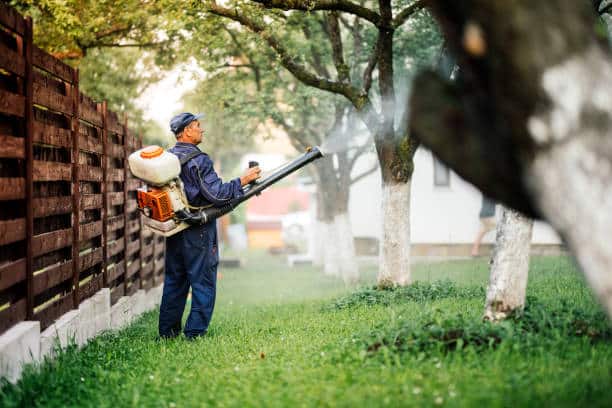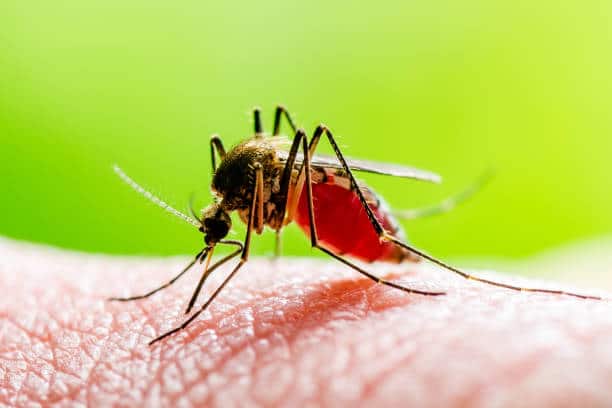Do people have a budget for mosquitoes preventions and safeguarding? People have budgets for every other thing like clothes, food, house maintenance, medical care, electricity, etc., believing these are the most necessities. But many forgot that preventing mosquitoes should also be one of the priorities in their annual personal budget.
Oh! Maybe people still believe it is already included in their medical budget or bill. They forget that the havoc of mosquitoes shoots up or increases the medical bill and expenses because if proper precautions are taken, the medical bill would be minimal.
In the face of mosquitoes, our mosquito-loving society is good at coughing up malaria drugs that cure the infection and other diseases, but it does not pay for those areas where mosquitoes directly spread diseases like dengue fever, yellow fever, and encephalitis. This article, Mosquitoes: The Great Killers in the World, will discuss the dangers of this insect in detail.
Many people have even given up on the control of mosquito-spread because they are seen as the parasites they usually live with. In the time before mosquito control programs came into being, such mosquito-borne diseases were extremely prevalent and very dangerous for local people.
Those who are subjected to mosquito-borne diseases can easily become carriers of such diseases to other members of their families, especially during the newborn stage when they are more likely to transmit the infection.
Transmission of the infection is very fast because of the interrelationship between people and the carrier (mosquitoes). They live close to people and also feed on them, but the system of treatment is the major problem because some people are resistant to the infection, while some are not.

MOSQUITOES: THE GREATEST KILLERS IN THE WORLD
Why Mosquitoes Is So Deadly
Sir Ronald Ross’s Discovery Of Malaria Parasite
Sir Ronald Ross, a Nobel Prize winner, discovered the malaria parasite while examining the stomach tissue of a mosquito. It did not take him long to establish that the female Anopheles mosquito is the carrier of malaria.
The possibility of human malaria caused by a variety of Plasmodium species transmitted by mosquitoes is now well-established.
Aedes Aegypti (The Worst Diseases Carrier)
There are several species that are more than 3,000 mosquito species that may appear to be the same, although many of them are harmless. According to the CDC, UNICEF, and the World Health Organization, Aedes aegypti is the worst disease-carrying insect.
Despite being small, it is quite deadly since it spreads diseases like yellow fever, malaria, dengue fever, and chikungunya.
Mosquitoes Kill One Million Yearly
Although Aedes aegypti has been identified by experts as the world’s deadliest disease-carrying mosquito species, its impact on human health is dangerous and lethal. The mosquito is still the deadliest critter in the world, despite the fact that only females feed on humans.
Today, mosquitoes cause over 1 million fatalities yearly. These tiny insects not only transmit severe ailments but also have bad effects on people’s health and well-being.
Mosquitoes Live Close to Humans and Warm Environments
All mosquitoes have certain characteristics in common, such as a four-stage life cycle (egg, larva, pupa, and adult). As we know, no species is as lethal as Aedes aegypti and its larval stage. This species and its parasite offspring circulate in warm places where humans dwell.
Also, a related species, Aedes albopictus, which is endemic to Africa, is sometimes confused with these benign insects since they are the only species that actually cause disease.
Most Mosquitoes Can travel and See from a Reasonable Distance
Mosquitoes are capable of spreading deadly viruses from one person to another, from a few hours to weeks after a person first comes into contact with the larvae. When the host is between 15 and 50 feet away, a mosquito can see it if it flies closer in reaction to the alluring carbon dioxide. The majority of mosquito species are able to travel 1-3 miles.
They Are Common In Africa And India Where They Cause More Danger
In India, there are 400 different species of mosquito that spread and thrive in tropical climates, which are marked by warm temperatures and rain. Also, there are more than 145 mosquito-borne diseases (MBPs) and over 656 different mosquito species known to exist in Africa.
This means that there are more mosquitoes in Asia, Africa, and the Americas. The deadliest type of malaria, Plasmodium falciparum, is most common in sub-Saharan Africa, where it kills more than 400,000 people yearly, especially children under the age of five.
Mosquitoes Transmit The Parasites that Cause Elephantiasis
The parasites that cause lymphatic filariasis, one of the main causes of disability, are spread by these mosquitoes. Millions of individuals throughout the world suffer from elephantiasis, a condition that causes swollen limbs, excruciating agony, and social discrimination.
It is also crucial to remember that Anopheles and Aedes species are among the most dangerous. Except for Antarctica, almost every continent is home to the Anopheles mosquito, which is the primary vector of malaria.
Some Mosquitoes Are Non-bloodsucking
It is well recognized that the Aedes aegypti mosquito alone is one of the deadliest mosquito species, spreading diseases such as dengue, lymphatic filariasis, yellow fever, and others. Other types of mosquitoes that have been identified don’t even feed on human blood.
The elephant mosquito, or species, is the biggest non-bloodsucking insect on the planet. The larvae of Toxorhynchites are advantageous to humans because they consume the larvae of other mosquitoes.
Reasons For The Increase In Mosquitoes-borne Diseases Spread

Since more mosquitoes are being produced as a result of environmental changes and other causes, more diseases are being spread by them. Both the diseases that mosquitoes spread and their relative abundance have increased during the past three decades.
Due to ecological factors, mosquitoes can now survive longer and reproduce more frequently within human residences because of advancements in housing, climate control, and economic status. Here are a few further justifications:
Water Availability
Mosquitoes live in water areas and poor sanitation environments, and many of them increase their breeding and production rapidly because of the availability of what they can feed on if they don’t suck blood.
Water availability is a key factor in the increase of malaria cases in the world, as well as many other tropical diseases. People who lack clean drinking water, proper sanitation, and a means of cooking foods that are suitable for oral intake are particularly vulnerable to diseases spread by mosquitoes.
Children Do not Receive First Vaccine
Yellow fever is typically fatal in childhood, yet many children do not receive their first vaccination against it until they are five years old. This puts them in danger of contracting the disease. Every year, between 6,000 and 26,000 children under the age of five get yellow fever.
Children frequently get their first immunization between the ages of 2 and 4 in regions where malaria is a risk, such as South America. This second round of immunizations may be required for children between the ages of 5 years old and 9 years old. The first doses give immunity against yellow fever but do not shield against other tropical diseases like malaria.
Global Warming Effect
Global warming is a significant contributing factor since it increases the number of mosquitoes that can transmit malaria. As a result of warmer weather luring more insects, the malaria epidemic in Africa has risen due to the continent’s vast population of mosquitoes that carry the disease.
This increase in mosquitoes is an example of global warming. However, because of industrialization and overpopulation, carbon dioxide levels are growing, which contributes significantly to climate change. Therefore, global warming leads to the rising carbon dioxide on earth.
The increase in mosquito populations, brought on by environmental changes and other causes, is the overarching trend that needs to be blamed on the rise in diseases spread by mosquitoes.
Predator-killing Plants and Habitat Loss
Predator-killing plants, habitat degradation, and the use of pesticides are some of the additional reasons that contribute to the increase in mosquito populations. The growth of mosquitoes due to the natural process of evolution is the cause of their increased aggression and painful bites.
Too many new mosquito species, habitat loss, changes in agriculture (predator-killing plants), pesticides, and altered weather patterns are the main causes of mosquito population growth. This rise in the mosquito population would not be affecting people if the weather does not favor them.
Specifically, due to urbanization, suburban expansion, and the introduction of exotic species from Africa, the number of native mosquito species has been rising in Europe, where the climate is significantly cooler and dryer than in the United States.
Many Species of Mosquitoes Sensitivities
Many different types of mosquitoes have the ability to detect the presence of people and other animals through smell, sound, or vibration. The West Nile virus can be fatal, but it only takes one bite to do so.
The West Nile virus has been linked to human encephalitis, meningitis, and animal fatalities. It has been 40 years since researchers had access to West Nile virus-infected blood for experiments on infected and uninfected animals.
Given the large population of West Nile mosquitoes, it seems unlikely that a treatment for the West Nile virus will be found. Also, specialists fear that a West Nile virus epidemic would break out, which might endanger human survival.
Lack of Toxic Plant and Insecticides
Insecticides like dichloro-diphenyl-trichloroethane (DDT), which are efficient at killing bothersome insects, are scarce, which contributes to the rise of mosquitoes. This product is also very expensive and the cost of procuring enough quantity for usage is exorbitant.
It was expected that as temperatures dropped, mosquitoes would continue to breed and be quite active in the fall and winter. The vast acres of moist, standing water were eventually removed by a large group of volunteers when mosquito traps proved ineffectual.
DDT has been used in so many regions that mosquito populations have become dependent on it that the environment’s declining DDT levels are likely to have had little impact on mosquito numbers. This odd material seriously injured humans, but it also helped in the fight against mosquitoes.
Global Warming Effect On Mosquitoes

Global warming refers to the increase in the planet’s average temperature and is mostly caused by the greenhouse effect, which is becoming more prevalent. It is thought that both may directly and indirectly, negatively impact human health in a number of ways. The way mosquitoes reproduce has clearly been impacted by global warming.
Because of the rising temperatures that drive mosquitoes away from their breeding habitats and the likelihood that their numbers will continue to decline as the issue gets worse, mosquito populations are declining in tropical areas with adequate rainfall. This reason makes it difficult for mosquitoes to survive in Antarctica and other cold regions.
The burning of fossil fuels like coal, oil, and natural gas by humans, as well as the clearing of large tracts of tropical rainforest, which increases the atmospheric concentration of greenhouse gases and contributes to global warming, are some of the causes of these increases in greenhouse gas levels.
The prevalence of pesticide-resistant mosquitoes is being impacted by global warming. As a result of all of this, it is also known that they are acquiring pesticide resistance. However, a number of plant and animal species became extinct in the early 21st century as a result of global warming.
This caused the polar areas to warm up twice as quickly as the world average and prevented many animal species from adapting to the sudden change in their environment. Therefore, physical or chemical factors by themselves cannot fully account for the insects’ incapacity to thrive in Antarctica. The environment is severely harmed by humans, and global warming is no exception.
How To Reduce Mosquitoes Population In The World

Mosquito populations are growing and may soon reach epidemic levels because their reproduction is encouraged by a wet atmosphere. They produce millions of larvae at every stage of their life cycle after laying billions of eggs. Although there are natural management options, such as using pesticides and deicing agents, they don’t resolve the problem completely.
If these diseases were to be eliminated, a substantial number of lives would be saved, along with a sizable amount of suffering and harm. Let us have a look at a few methods for managing the population and preventing future outbreaks.
Destroying Of Mosquitoes Breeding Site
Mosquito breeding sites have been detected everywhere—on urban street ditches, moist environments near the seaside, remote forested areas, and even on high mountain peaks—so pesticides are not available everywhere. Mosquitoes are attracted to temperature differences in the same way that humans are attracted to artificial light sources, e.g., street lights and neon signs.
Mosquitoes are notorious for their fondness for dark, humid places like the branches of trees and caves, abandoned structures, and stagnant waterholes, and they can breed without water. Also, because of their tenacity and ability to travel to new regions to continue reproducing, destroying the majority of this site would only be a temporary solution.
Injecting More Funds To High-Risk Areas
The West Nile virus, Zika, and dengue fever are just a few of the terrible illnesses that mosquitoes can spread. Although the “Natural Mosquito Control Act of 1972” established a national fund for high-risk areas. These monies can be utilized to provide aid to the affected parties and to buy cutting-edge mosquito-repelling technology.
The Centers for Disease Control and Prevention (CDC) reports that only 34 states and two territories have implemented local regulations over the past four decades to control mosquitoes that spread diseases that endanger public health.
Educating People On Negative Effects And Prevention Techniques
These vector-borne diseases present a problem for public health officials who endeavor to control them despite their detrimental impacts, which include spreading disease. Healthcare professionals face the challenging task of developing methods to detect and address vector-borne diseases at all levels of the societies.
However, they work because mosquitoes typically have multiple modes of transmission and they are not restricted to any one region or industry. Governments and non-governmental organizations work to educate the public and develop short-, medium-, and long-term control strategies.
Improving the Locality’s Setup and Arrangement
It is advisable not to leave any standing water in buckets, tires, gutters, plastic covers, or other items that serve as mosquito habitats. Ponds of short-term water can be excavated or drained and the water in the treated pool should flow continuously. The disease can be stopped before it becomes an epidemic by inspecting play areas for mosquitoes once a week.
A larger water container can be buried on the ground and covered with an insecticide solution to fill tanks that can hold water that a mosquito cannot drown in and makes use of a few of these ponds in the quest for proof that DDT agents may prevent yellow fever mosquitoes from reproducing.
An Infrastructure Barriers System

Control mosquito larvae by using methods that are appropriate for the ecosystem. You can control adult mosquitoes by using pesticides. Fill in all the gaps in the walls, doors, and windows to prevent mosquitoes from entering. Ensure the screens on your windows and doors are in good shape. All of the beds and baby carriers should be covered with netting.
You may avoid adult mosquitoes breeding in your garden and the transmission of the West Nile Virus by preventing adult mosquitoes from forming in the first place. The mosquito-borne viral eggs must be removed from the water before they can hatch into adult viruses.
Avoid Mosquito Bites
Mosquitoes will stay away from exposed flesh if you wear long sleeves, long pants, and socks. Tuck your shirts into your pants and your pants into your socks to keep mosquitoes from biting you via the holes in your clothing. Whenever it is practical to stay inside, especially if a mosquito-borne illness alert is in force.
Utilize EPA-certified insect repellents that come with directions and cautions. Follow any instructions on the package thoroughly. If possible, stay away from places where there are a lot of mosquitoes, and if you must go there, make sure you are well-covered and protected.
Public Health Interventions, Public And Private Sector Incentives
Numerous approaches could be taken to address the mosquito issue, including but not limited to community education, economic development plans, and private sector incentives for retrofitting structures to reduce bug populations. The federal government will offer financial incentives to companies and property owners who take action to stop the spread of diseases.
Also, such schemes can reward owners for reducing disease transmission or for getting rid of still water that can breed mosquitoes to prevent mosquito populations from increasing. Mosquito management is a deliberate effort by nonprofit organizations and policymakers to boost agricultural production, improve human health, lower the danger of infectious disease epidemics, and minimize medical spending.
Auxiliary Preventive Measure By The State
To reduce the likelihood of mosquitoes biting you, use yellow “bug” lights outdoors instead of regular ones. The city imposed a ban on the use of open flames outside in all non-fireproof public venues in the aftermath of a record heat wave in 2018–2019. The city forbade the use of any open flames in public areas after announcing a local “insect season.”
Similarly, by 2023, yellow bug lights shall comprise at least 80% of outdoor lighting in order to reduce the cost of replacement. This is in line with the Parks Department’s plan, which was overwhelmingly approved by the City Council in the fall of 2018 and calls for the installation of yellow bug lights for all exterior lighting that turns on at dark and off before dawn.
Conclusion
Mosquitoes are the primary carriers of deadly diseases and the deadliest killers. Because of mosquitoes, the food chain, and infected water moving between animals, a lethal virus that affects animals can also affect humans. Given this, in order to guarantee human safety, we should fully ban human proximity to or contact with insects and destroy all mosquito habitats.
No places are free of malaria as of now. Therefore, in order to prevent the spread of other dangerous diseases like this, humans must devise innovative strategies to eradicate any potential mosquito habitats. To live a safe life, we must put the suggestions made in this article into practice.